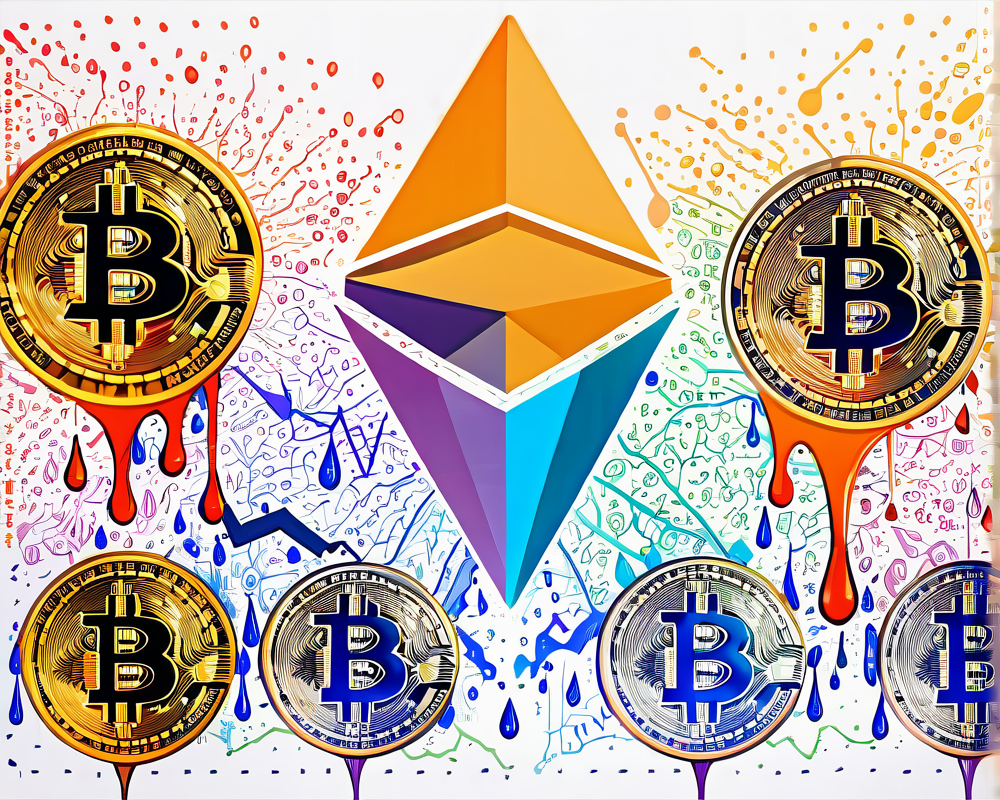The Bitcoin vs. Ethereum Tug-of-War
In the world of cryptocurrencies, the delicate dance between Bitcoin and Ethereum prices has become a topic worth pondering (and maybe a chuckle or two). Over the past few weeks, we’ve witnessed a peculiar phenomenon—a tight inverse correlation. When Bitcoin decides to throw a party and rise in value, Ethereum seems to sulk and go decline into the shadows, and vice versa. It’s as if these two digital siblings are having a sibling rivalry, battling for their respective thrones.
Why the Distinct Paths?
You might say Bitcoin is the wise old grandparent in this scenario, known as digital gold and advocating a cash system. Ethereum? Well, it’s the cool tech-savvy cousin who’s all about decentralized applications. The differences between the two networks extend beyond their philosophies and monetary policies. Bitcoin, designed with its eye on stability, contrasts sharply with Ethereum’s flexibility and functionality. In short:
- Bitcoin = Digital currency / Store of value.
- Ethereum = Decentralized network for apps.
Experts Weigh In
Experts and Bitcoin buffs alike have chimed in on the rivalry myth. Andreas Antonopoulos once pointed out that calling Ethereum a ‘Bitcoin rival’ is like saying a squirrel is a rival to a hawk. In other words, it’s a stretch! The truth is, the two are not mutually exclusive. Ethereum developers often ride the coattails of Bitcoin’s stability for security, while Bitcoin enjoys the advances of Ethereum’s innovative spirit.
When Bitcoin’s Shoes Don’t Fit
It’s no secret that Bitcoin has encountered scalability issues. As the Bitcoin community debates about suitable scaling solutions, some users have taken to Ethereum, dubbing it a viable alternative payment method. Here, transaction fees (also known as gas) come into play. Unlike Bitcoin, where fees fluctuate, Ethereum’s fixed fees can be a refreshing change for users.
Edmund Edgar, a leading voice in this discussion, says, “A user’s account can be modeled as a simple balance without quirky surprises—a flat fee that feels like a friendly neighbor instead of a surprise billing from a hospital!” This simplicity is part of what makes Ethereum increasingly appealing.
The Swinging Trade
Traders too, seem to be oscillating between Bitcoin and Ether like kids on a swing set in a playground. As Chris Burniske from ARK Invest puts it, “Correlation doesn’t equal causation.” These shifts might be short-term, but they reveal a trend of traders navigating back and forth, depending on which sibling is performing better.
The Future of ETH/BTC Trading
Economic tides change, and so does the interest in our digital duos. It’s evident that there’s a surge in the engagement of Bitcoin users with Ethereum. Recent figures indicate that the ETH to BTC trading pair accounts for over 50% of all Ethereum trades. This trend showcases not just curiosity but a budding affinity for Ethereum among Bitcoin loyalists.
In this wild world of crypto, only time will tell how the Ether and Bitcoin saga unfolds—whether they’ll continue their sibling rivalry or perhaps collaborate for a digital gold rush!















+ There are no comments
Add yours